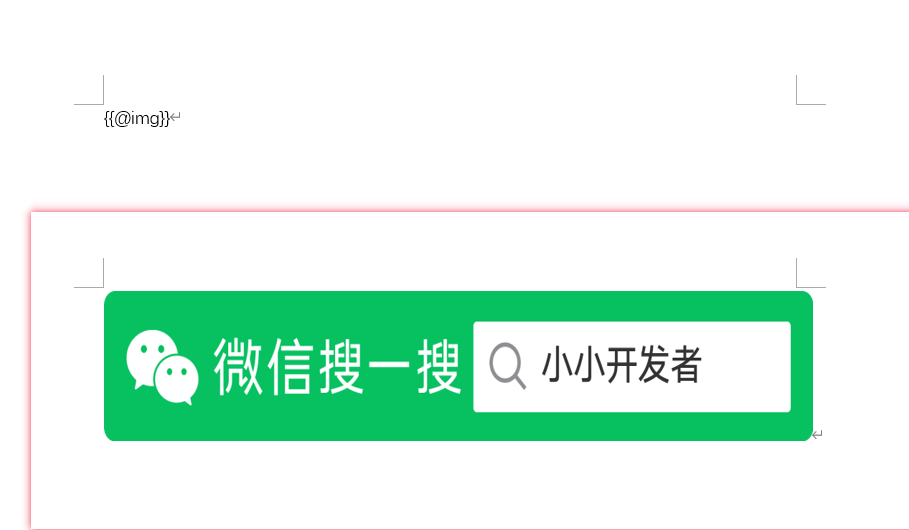学习目标
今天,和大家分享一款Word模板引擎,它可以基于Word模板和数据生成新的文档。在工作中我们经常会遇到,将后台的数据填充到特定的word模板中,然后生成渲染模板生成新的word提供下载;例如:学生成绩单,单位合同,报销费用等!如果能够掌控一款合适的java生成word模板的工具,将极大的提高我们的开发效率!
POI-tl介绍
poi-tl(poi template language)是Word模板引擎,基于Word模板和数据生成新的文档。
官方文档:http://deepoove.com/poi-tl
为什么我们选择poi-tl?
Apache POI不仅封装了易用的文档API(文本、图片、表格、页眉、页脚、图表等),也可以在底层直接操作文档XML结构,poi-tl正是一个基于Apache POI的Word模板引擎,并且拥有着让人喜悦的特性。
快速入门案例
1、添加依赖
<dependency>
<groupId>com.deepoove</groupId>
<artifactId>poi-tl</artifactId>
<version>1.10.0</version>
</dependency>
2、主要代码
private static Logger logger = LoggerFactory.getLogger(FileUtils.class);
/**
* 渲染Word 文件
* @param templatePath 文件模板路径
* @param fileDir 生成文件的路径
* @param fileName 生成的文件名
* @param paramMap 数据
* @return
*/
public static String createWord(String templatePath, String fileDir, String fileName, Map<String, Object> paramMap) {
File dir = new File(fileDir);
if (!dir.exists()) {
logger.info("目录不存在,创建文件夹{}!", fileDir);
dir.mkdirs();
}
String filePath = fileDir +"/"+ fileName;
XWPFTemplate template = XWPFTemplate.compile(templatePath).render(paramMap);
try {
template.writeToFile(filePath);
template.close();
} catch (Exception e) {
logger.error("生成word异常{}", e.getMessage());
e.printStackTrace();
}
return filePath;
}
3、测试
public static void main(String[] args) throws Exception{
String templatePath = "E:/template/template.docx"; //模板路径
String fileDir = "E:/template/final/"; //生成文档路径
String fileName = "output.docx"; //文件名
Map<String,Object> params = new HashMap<>();
params. put("title", "Hi, poi-tl Word模板引擎");
String wordPath = FileUtils.createWord(templatePath, fileDir, fileName, params);
System.out.println("生成文档的路径wordPath = " + wordPath);
}
注:
- 首先,我们把模板放在了E盘的
template文件夹下面。模板里面的内容:
- 运行main方法,将会在
E:\template\final生成最终的文件。
渲染文本
准备word模板:
public static void main(String[] args) throws Exception{
String templatePath = "E:/template/template.docx"; //模板路径
String fileDir = "E:/template/final/"; //生成文档路径
String fileName = "output.docx"; //文件名
Map<String,Object> params = new HashMap<>();
params.put("dep","xxx部门");
params.put("apply_man","张三");
params.put("project","xxxxx项目费用");
params.put("money","13000元");
params.put("count","3");
params.put("year","2021");
params.put("month","03");
params.put("day","23");
String wordPath = FileUtils.createWord(templatePath, fileDir, fileName, params);
System.out.println("生成文档的路径wordPath = " + wordPath);
}

循环渲染
我们常常遇到,费用报销明细里面可能有多条记录,此时我们需要用到表格循环。
public static void main(String[] args) throws Exception{
String templatePath = "E:/template/template.docx"; //模板路径
String fileDir = "E:/template/final/"; //生成文档路径
String fileName = "output.docx"; //文件名
HackLoopTableRenderPolicy policy = new HackLoopTableRenderPolicy();
Money row01 = new Money();
row01.setApply_man("张三");
row01.setProject("xxxx项目费用");
row01.setCount("1");
row01.setMoney("2300");
Money row02 = new Money();
row02.setApply_man("李四");
row02.setProject("xxxx项目费用");
row02.setCount("4");
row02.setMoney("6800");
List<Money> moneys = new ArrayList<>();
moneys.add(row01);
moneys.add(row02);
Configure config = Configure.builder()
.bind("moneys", policy)
.build();
XWPFTemplate template = XWPFTemplate.compile(templatePath, config).render(
new HashMap<String, Object>() {{
put("moneys", moneys);
}}
);
template.writeToFile(fileDir+fileName);
template.close();
}

渲染图片
图片标签以@开始:{{@var}}
public static void main(String[] args) throws Exception {
Map<String, Object> params = new HashMap<>();
String templatePath = "E:/template/template.docx"; //模板路径
String imgPath = "E:/template/template-img.png";
String fileDir = "E:/template/final/";
params.put("img", Pictures.ofLocal(imgPath).size(567, 120).create());
XWPFTemplate template = XWPFTemplate.compile(templatePath).render(params);
template.writeToFile(fileDir + "output.docx");
template.close();
}
最终效果:
本篇文章到这里就基本结束了,如果这篇文章对你有帮助,希望大家能留下你的点赞、 关注、 分享、 留言❤️❤️❤️

版权声明:本文为weixin_43759352原创文章,遵循CC 4.0 BY-SA版权协议,转载请附上原文出处链接和本声明。